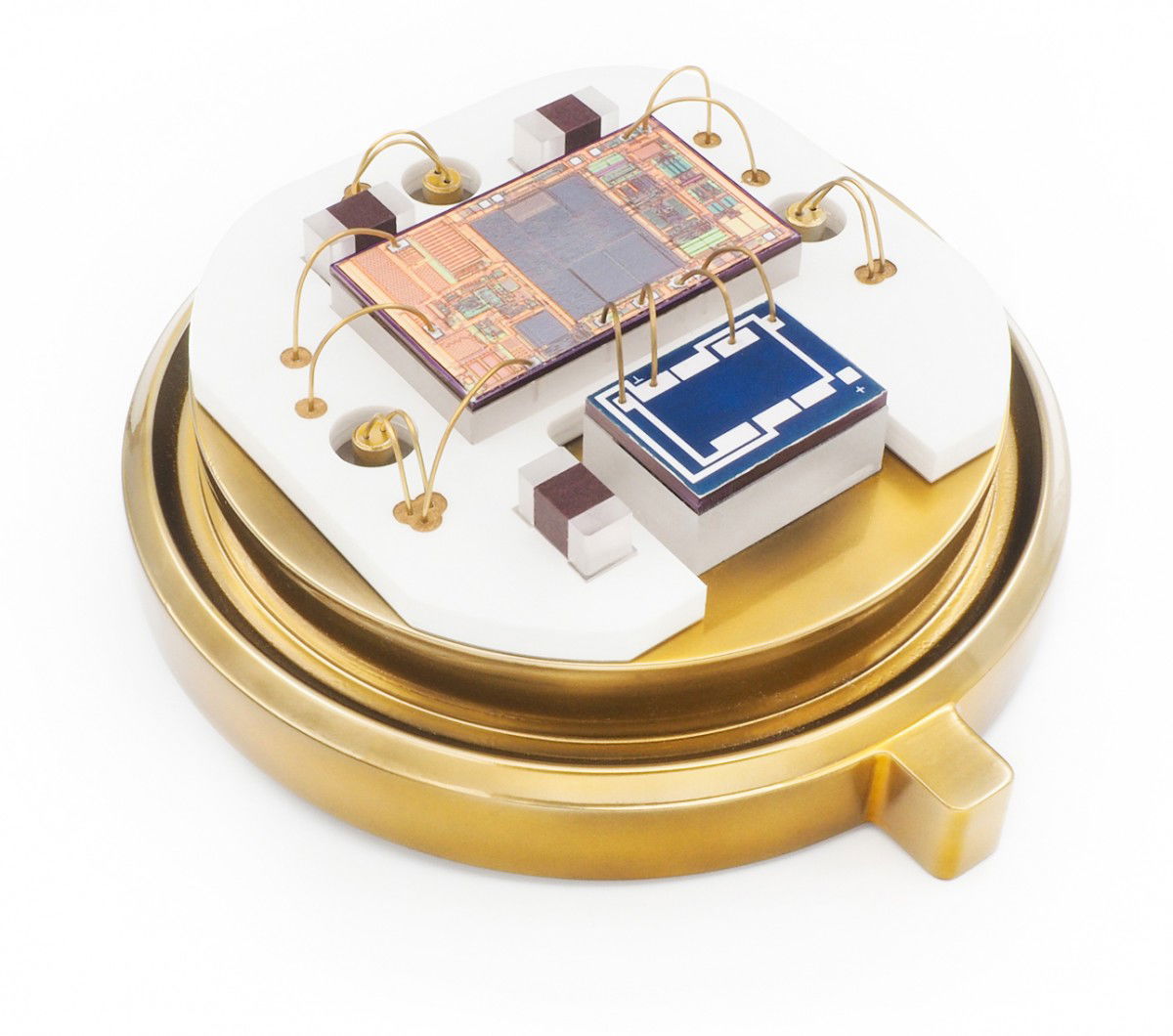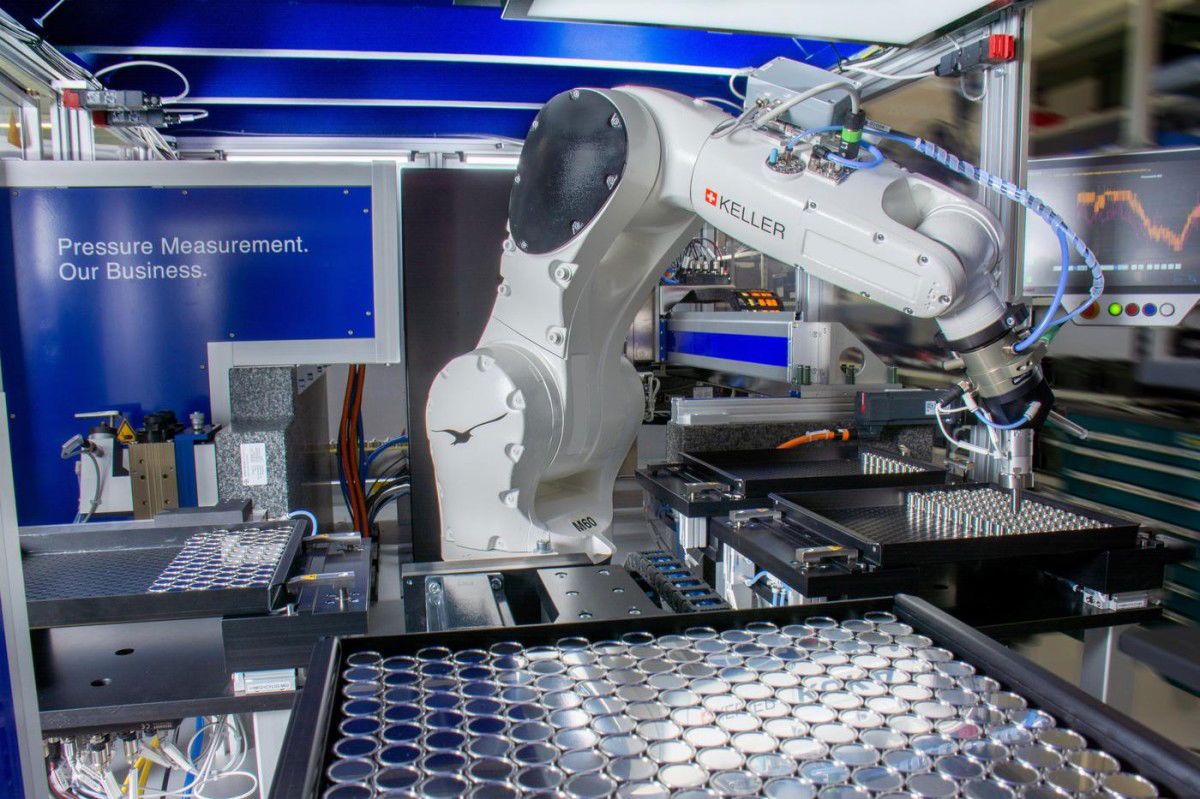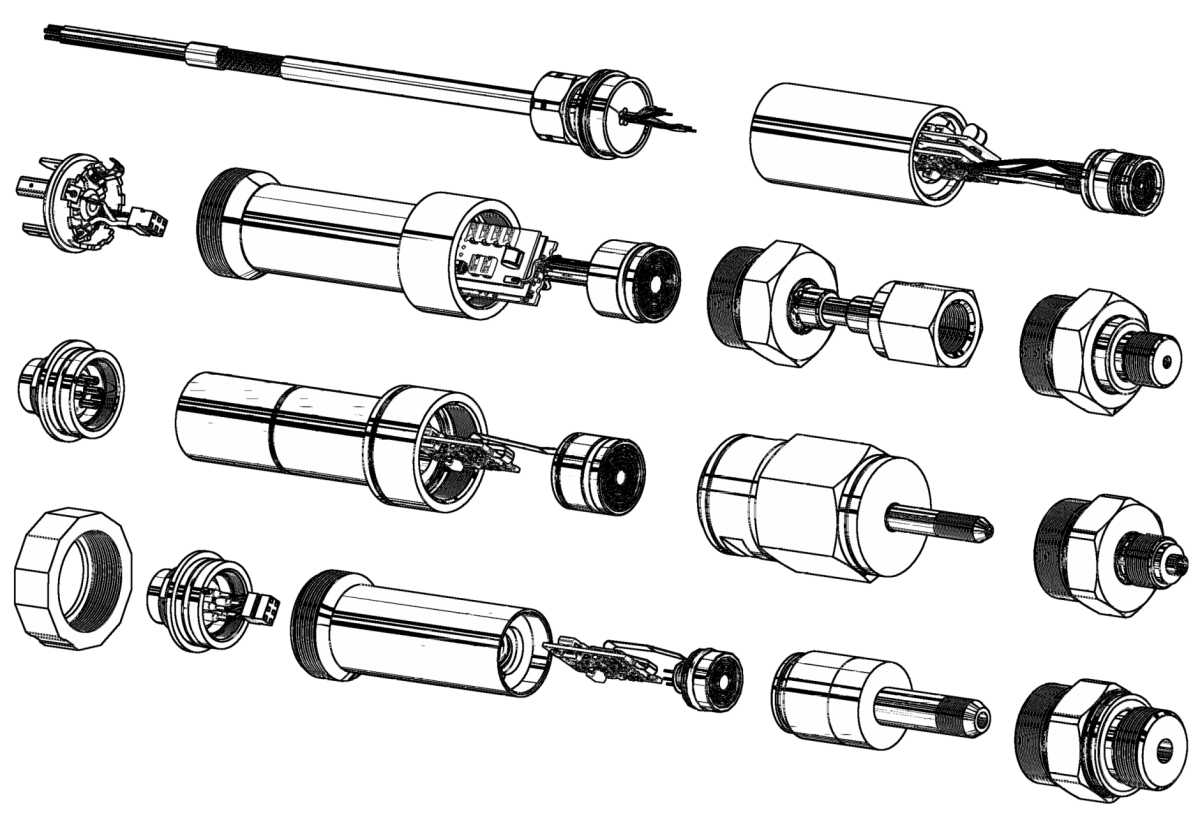
Piezoresistive pressure measurement technology made in Switzerland
Every year, KELLER produces more than 1,3 million high-grade measuring cells. From start to finish, our value chain is created at our headquarters in Winterthur, where we do everything from producing the individual parts to calibrating the sensor and carrying out the final checks on the finished product. This means that all KELLER products are 'Made in Switzerland' and customers can be sure that they are getting renowned Swiss quality.
Technology

The versatility of the isolated pressure measuring cell
Electronic pressure measurement requires a sensor that records the pressure to be measured and converts it into an electrical signal. Due to the large output signals and the established manufacturing processes, as well as the many years of experience gained, piezoresistive technology has become established in pressure measurement.
Resistive pressure measurement centres around an electrical resistance whose resistance value changes as a function of the pressure to be measured. The measuring resistors are integrated into a pressure-sensitive diaphragm and, depending on the pressure intensity, they are either stretched (electrical resistance is increasing) or compressed (electrical resistance is decreasing). The greater the pressure, the more the diaphragm deforms, meaning that the extent of the change in resistance depends directly on the pressure. In addition, in a piezoresistive resistor, the mechanical tension that occurs when it is stretched or compressed also leads to a change in electrical conductivity. This piezoresistive effect is based on shifts in the atomic positions, which directly affect the electric charge transport. The change in resistance resulting from the change in electrical conductivity can be significantly greater than that caused by pure deformation.
The basis for a piezoresistive sensor chip is a crystalline silicon disc less than one millimetre thick known as a wafer. Foreign atoms are introduced in the surface at certain specific points. These doped areas in the silicon form the piezoresistive resistors. In a subsequent step, the wafer is then thinned on a localised basis in such a way that diaphragms are formed directly in the silicon. If the diaphragm is deformed, the resistance value then increases or decreases depending on the position. Afterwards, the back of the silicon is firmly connected to a glass. For absolute pressure sensors, this creates a closed reference space in a vacuum. When measuring relative pressure, the rear glass contains a reference hole.
In order to isolate the sensor chips from the medium to be measured, they are mounted in a pressure-tight metal housing which is filled with oil and sealed at the front with a thin diaphragm. The pressure then acts on the sensor chip via this diaphragm and the oil as a transmission medium.
The isolated pressure measuring cell stands out thanks to its versatility: it is compatible with various media – even aggressive media – and covers wide pressure ranges. These diverse potential applications combine the isolated piezoresistive pressure measuring cell with the benefits of piezoresistive technology: no signs of fatigue even after a large number of pressure cycles, excellent long-term stability and freedom from hysteresis. Finally, the individual construction of the housing permits great flexibility for a wide variety of applications, even in critical environments.
Production

Cost efficiency through high production capacity
In over 35 highly specialised production islands, the latest automated production processes are used to manufacture large series of industrial OEM transducers and special designs in small quantities. Every year, more than a million pressure transducers and pressure transmitters are produced. This high volume allows us to keep prices low, despite our complex production processes and stringent quality requirements.
Flexibility

Made-to-measure solutions
Our products have a modular design, and many of their elements are manufactured in-house. This means that even for small production runs, we can make a few tweaks for our customers without incurring sky-high costs. All our products are available in different expansion stages and offer outstanding flexibility for OEM customers. Some applications require new product developments that are tailored precisely to the intended function and the place where the equipment is to be used.
Custom Solutions
Every application has its own unique challenges.
Together we will find the best solution for your project.
